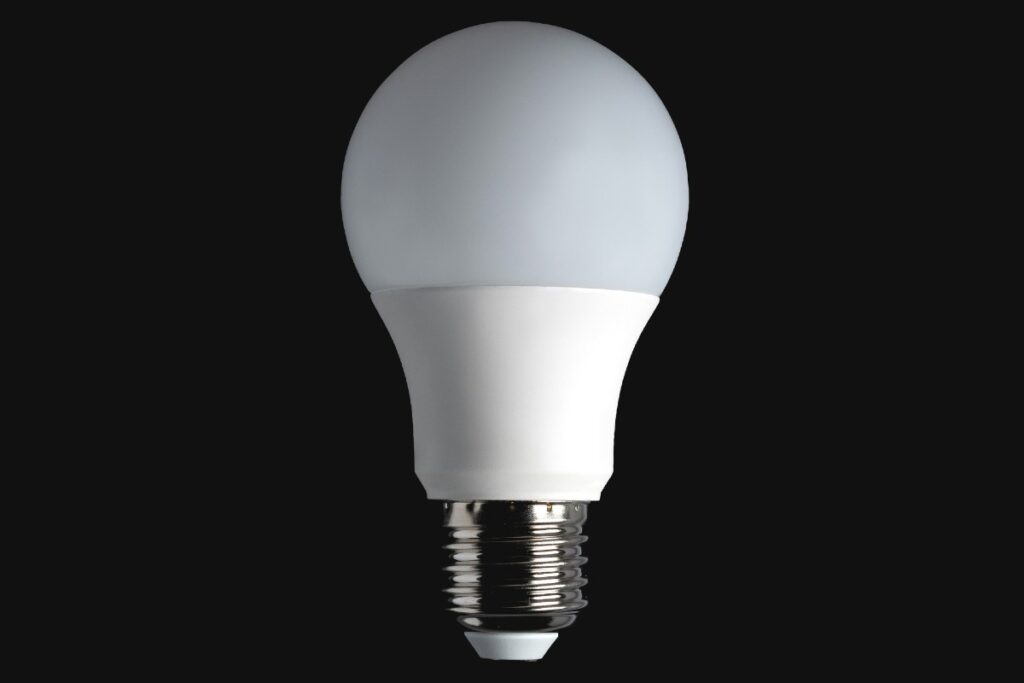(Editor’s Note: The writer is owner of Energy Concepts in Duluth, an LED lighting consultant and supplier of energy-efficient lighting for 43 years in Gwinnett County. He is also a veteran, an author of 14 books, member of The American Legion and past president of Duluth Civitan Club.—eeb)
By Jerry Robb
DULUTH, Ga. | Light bulbs are heavily regulated by environmental policies of federal and state governments. Invented by Thomas Edison, the standard-type light bulb has become an extinct species, thanks to climate change, man-made or natural.
August 2023 brought the death of the standard incandescent/halogen light bulb, from the Department of Energy. The ban is a result of climate change law. There are a few exceptions that still can be made, such as oven lights; but they too will bite the dust. The war against standard light bulbs began in the 1980s with the advent of the Compact Fluorescent Lamp, the ones that look like ice cream cones.
While the government was debating the banning of natural gas appliances last year, the incandescent light quietly met its demise.
LED (light emitting diode) bulbs have come a long way since the blinking red and green lights on a computer. With the advent of white LEDs, it drastically changed the lighting world.
If your facility (or home) has not converted to LED, here is the question to answer: Would you invest $10,000 to save $5,000/year on your electric bill for 10 years? That makes it a $10,000 investment with a $50,000+ payout! That’s a two-year payback!
A typical office building with a $40,000 annual electric bill consists of 40 percent lighting, 40 percent for heating and air conditioning, HVAC and 20 percent miscellaneous. An LED lighting changeout would drop the lighting cost from $16,000 to $8,000. If going green, do the green that has a payback in the least amount of time.
Here are some terms to know:
Lumens: A lumen is a unit of light-brightness. The number of lumens (brightness) does not depend on the number of watts. For instance, a 100-watt incandescent lamp produces 1,600 lumens. A 100-watt LED produces 13,500 lumens. Lower electric bills are good for the bottom line and for the environment.
Lifespan: LED lamps have lifespans (number of hours on until burnout) ranging from 15,000 hours for standard A19 bulb (like table lamps) to 100,000 hours for parking lot lamps. The now banned incandescent had a lifespan of 1,000-2,500 hours until burnout. Most LED lamps have a five-year warranty against burnout.
Color: One of the most common complaints of new light bulbs is the color of the light. LED is available in all ranges from soft white/warm white to daylight white. This color is indicated on the lamp and the side of the box, i.e., 2700K-3500K (warm white), 4000K cool white, 5000K bright white. Many LED lights today come with selectable color light and brightness.
How to buy: Trying to figure out at the store which bulbs to buy can be confusing. Here’re two suggestions:
-
- To replace a standard 60 incandescent: buy 9-10 watt LED.
- To replace a standard 100 watt bulb; buy 15-16 watt LED.
If you have any questions, contact me at 678-283-9787 or go to www.LetThereBeLight-LED.com. If an LED conversion is not in the budget, you might lease. The monthly energy savings will make the payment.
- Have a comment? Send to: elliott@brack.net












Follow Us